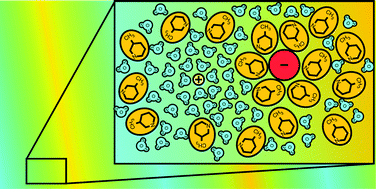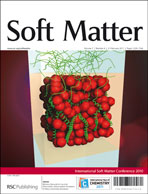The effect of an antagonistic salt on the phase behavior and nanoscale structure of a mixture of D2O and 3-methylpyridine was investigated by visual inspection and small-angle neutron scattering (SANS). The addition of the antagonistic salt, namely sodium tetraphenylborate (NaBPh4), induces the shrinking of the two-phase region in contrast to the case in which a normal (hydrophilic) salt is added. Below the phase separation point, the SANS profiles cannot be described by the Ornstein–Zernike function owing to the existence of a long-range periodic structure. With increasing salt concentration, the critical exponents change from the values of 3D-Ising and approach those of 2D-Ising. These results suggest that the concentration fluctuation of the mixture of solvents is limited to a quasi two-dimensional space by the periodic structure induced by the adding the salt. The same behaviors were also observed in mixtures composed of water, 3-methylpyridine, and ionic surfactant.
You have access to this article
 Please wait while we load your content...
Something went wrong. Try again?
Please wait while we load your content...
Something went wrong. Try again?


 Please wait while we load your content...
Please wait while we load your content...